 December 14, 2017 John E. Ross, KD8IDJ, Editor
| ||||||||||
Amateur Radio Volunteers Support Evacuation Shelters in Fire that Refuses to Die Since its start on December 4, the massive and only partially contained Thomas Fire in southern California by mid-week had consumed nearly 240,000 acres, destroyed more than 700 single-family residences and threatens thousands more, and caused residents in fire-threatened areas to evacuate. Amateur Radio volunteers have been supporting communication for American Red Cross shelter sites in Ventura and
Santa Barbara counties, passing traffic between evacuation centers. One of several fires that have broken out across Southern California, the Thomas Fire is far and away the largest. The Ventura County Auxiliary Communication Service (ACS)/Amateur Radio Emergency Service (ARES) Net activated on December 5, "as smoke filled the air, and the fire grew to catastrophic proportions," said Ray Smith, KI6VED, who volunteered with his wife Jade, KI6VFQ. Their home was included in an evacuation order. "The worst night for the crew at Nordhoff came Wednesday, December 6, when the fire surrounded the Town of Ojai on three sides," Smith explained. "The incident commander decided to shelter in place, instead of trying to move 250 refugees out on the only open exit, which was sometimes closed."
Smith told ARRL that several fire vehicles dispatched to Nordhoff High School -- a shelter site -- taking up positions around the campus, and firefighters stood guard by classrooms, opened to accommodate evacuees sleeping in their cars, some with their pets. "They were warned that if the trucks sounded their air horns, they were to pick up the [pet] cages and run for shelter on campus immediately," Smith said. "The flames moved east to west along Nordhoff Ridge, with an army of firefighters retreating before them. For a time, the radio operators, like everyone else, did not know what would happen to us," Smith said the fire passed within 2 miles of the shelter location. Radio amateurs also deployed to the Ventura County Emergency Operations Center (EOC). ARRL Ventura County District Emergency Coordinator Rob Hanson, W6RH, said the ACS/ARES volunteers staffed four evacuation centers, in addition to the EOC.
Santa Barbara Section Manager Jim Fortney, K6IYK, told ARRL that an Amateur Radio digital network (ARDN) MESH video network live-streamed video from several sites. "Loss of primary power has required using the solar power backup capabilities, but, unfortunately, the heavy smoke has made that backup less than fully reliable," he said. In addition some sites are down because of power outages, and at least one hilltop site was overrun by fire. In addition to power loss to repeater sites, solar panels charging off-grid batteries have been affected by the huge plumes of smoke blocking the sun. "The Santa Barbara District ARES organization works closely with Santa Barbara County OEM [and] is prepared to support any requests as the Thomas Fire continues to burn into Santa Barbara County," Fortney told ARRL. The Fallbrook Amateur Radio Group and other groups in the North County (San Diego) provided communication at some evacuation centers, and the Red Cross activated its own Amateur Radio team. As of mid-week, FEMA reported, evacuation orders remained in effect for more than 93,000 residents, although shelter occupancy was down to about 300. A boil water advisory has been issued for Ventura and Santa Barbara counties. Smith said that as of mid-week, Amateur Radio volunteers remain on duty in Santa Barbara County, "as the Thomas Fire has refused to die." January 2018 QST Debuts Fresh, New Design QST magazine is more than a century old, and with the major exception of color printing throughout the magazine starting in December 2000, it's remained mostly unchanged for the past couple of decades. Starting with the January 2018 issue of QST, now available to members in digital form, several noticeable changes are being made to the journal's format, design, and size. QST Editor and Publications Manager Steve Ford, WB8IMY, said member feedback over the last few years, has hinted at "significant shifts in media preferences within the Amateur Radio community." Extensive research undertaken late last year, "revealed an undeniable mandate for change," Ford said.
Ford said that starting with the January 2018 issue, QST will sport a modern, eye-catching design, and will be easier to read. The journal has been trimmed slightly to 144 pages per issue (in addition to covers), plus a smaller size to match the 8 × 10.5-inch publishing industry standard. The current QST trim size is nonstandard. "These changes will create significant savings for us in the cost of ink and paper, and will save even more on postage, which is one of our largest expenses," Ford explained, adding that cost savings will fund the development "of more of the types of the articles you've told us you want," as well as to provide more engaging social media content. In addition, fewer pages will let the editorial staff focus greater attention on each issue's content.
"While we will continue to publish QST in digital form each month, our research, and the research conducted by other publishers, has shown that a clear majority of readers still prefer books and magazines printed on paper, and so do our advertisers," Ford said. "So, thanks to the support of our advertisers, we will continue to publish QST on paper for the foreseeable future." Ford said additional changes are possible. "As your needs change, we will, too," he concluded. Logbook of The World to Add Support for CQ WAZ Award Participants in CQ magazine's Worked All Zones (WAZ) award program will soon be able to use the Logbook of The World (LoTW) system of ARRL, the national association for Amateur Radio, to apply for the WAZ award and its endorsements, ARRL and CQ announced on December 14. Amateur Radio operators will be able to use LoTW logs to generate lists of confirmed contacts to be submitted for WAZ credit. Standard LoTW credit fees and separate CQ award fees will apply.
Logbook of The World is ARRL's electronic confirmation system for Amateur Radio contacts. It provides a confirmation when both stations in a contact submit their logs to the system and a match between the logs is confirmed. LoTW has supported the CQ WPX Award program since 2012. "I am very pleased that participants in the CQ Worked All Zones award program will finally be able to use Logbook of the World confirmations in their applications for WAZ awards and endorsements," said CQ magazine Editor Rich Moseson, W2VU, adding that "WPX program participants have made excellent use of this service for the past five years and we look forward to providing it to WAZ program participants as well." "We are excited about the prospect of supporting CQ magazine's WAZ program through Logbook of The World, as it is something that many ham radio operators have been asking for," said Greg Widin, K0GW, ARRL First Vice President and chair of the Logbook Study Committee. "We believe this partnership will enhance the Amateur Radio experience for many practitioners." Worked All Zones is the second-oldest active Amateur Radio award program, behind the International Amateur Radio Union's Worked All Continents (WAC) award. The Doctor Will See You Now! "Listener Mailbag" is the topic of the current (December 7) episode of the "ARRL The Doctor is In" podcast. Listen...and learn!
Every 2 weeks, your host, QST Editor-in-Chief Steve Ford, WB8IMY, and the Doctor himself, Joel Hallas, W1ZR, will discuss a broad range of technical topics. You can also e-mail your questions to doctor@arrl.org, and the Doctor may answer them in a future podcast. Enjoy "ARRL The Doctor is In" on Apple iTunes, or by using your iPhone or iPad podcast app (just search for "ARRL The Doctor is In"). You can also listen online at Blubrry, or at Stitcher (free registration required, or browse the site as a guest) and through the free Stitcher app for iOS, Kindle, or Android devices. If you've never listened to a podcast before, download our beginner's guide. Just ahead: "Handheld Transceiver Antennas." Radio Anniversaries Abound in December December is the month in which three notable events in radio history occurred -- the first radio transmission heard across the Atlantic Ocean in 1901, the first broadcast of the human voice and music in 1906, and the first successful transatlantic Amateur Radio HF transmissions in 1921.
On December 12, 1901, Italian wireless pioneer Guglielmo Marconi succeeded in receiving the first transatlantic radio signal, transmitted from Poldhu, in Cornwall, England, to St. John's, Newfoundland, Canada. Marconi's team in Cornwall transmitted the letter "S" in Morse code, and this was heard by Marconi and his assistant George Kemp at a facility set up in Cabot Tower on Signal Hill in St. John's. On the Cornwall side, Marconi had erected a powerful spark-gap transmitter feeding a massive antenna. The receiving team used a kite antenna. The experiment proved that radio signals could be transmitted beyond the line of sight, opening the door to global wireless communication. An article in the December 2007 issue of QST suggested that absorption may have been less in 1901 than in the 21st century, perhaps contributing to the success of the feat, which occurred during daylight on the Canadian end. On Christmas Eve 1906, experimenter Reginald Fessenden made what may have been the first radio broadcast to include speech and music. The transmission originated at Brant Rock, Massachusetts, about 30 miles from Boston.
As he's done in year's past, Brian Justin, WA1ZMS, of Forest, Virginia, will commemorate that first audio broadcast by operating WI2XLQ on 486 kHz this month, marking the 111th anniversary of the Fessenden's accomplishment. Historic accounts say Fessenden played the violin -- or a recording of violin music -- and read a brief Bible verse, astounding radio experimenters and shipboard operators who heard the broadcast. "Since we now have a ham band on 630 meters, I will have a shorter transmission period this year that will only cover the Christmas holiday," Justin told ARRL. That's because he hopes to be active on the new band himself. Justin will begin his transmission on December 24 at 1700 UTC and continue until December 26 at 1659 UTC. For his transmitter in 1906, Fessenden used an ac alternator modulated by placing carbon microphones in series with the antenna feed line. Justin's homebuilt station is slightly more modern, based on a 1921 vacuum tube master oscillator power amplifier (MOPA) design, using a UV-202 tube. The transmitter employs Heising AM modulation, developed by Raymond Heising during World War I. Send listener reports directly to Brian Justin, WA1ZMS. In 1921, ARRL sponsored two series of transatlantic tests to see if signals from previously qualified Amateur Radio stations could be heard at a receiving station in Ardrossan, Scotland. The second series succeeded, with several ham stations heard on the receiving end, using equipment far superior to what had been available to Marconi just 20 years earlier. "The Story of the Transatlantics" chronicled the events in the February 1922 issue of QST, to great fanfare. As Mike Marinaro, WN1M, recounted in "The Transatlantic Tests," in the May 2014 issue of QST, the first signal "unofficially" heard in Scotland was actually that of a pirate, identifying as 1AW and not using the prearranged transmission format.
The "rough listening post" in Scotland, staffed by receiver designer Paul Godley, 2ZE, and D.E. Pearson of the Marconi Company, was equipped with a superheterodyne and regenerative receiver connected to a 1,300-foot Beverage antenna, 12 feet above ground. On December 10, the CW signals of official entry 1BCG, owned by Minton Cronkhite, "were solidly heard on 230 to 235 meters," Marinaro wrote in 2014. "This signal derived from the specially designed and constructed station of the Radio Club of America at Greenwich, Connecticut -- the only station heard that morning." Connecticut radio amateur and radio history buff Clark Burgard, N1BCG, will be among those celebrating the 96th anniversary of the first transatlantic shortwave transmission in Greenwich, Connecticut. Several other stations will take part by establishing contacts between the US and Europe, including GM7VSB in Ardrossan, Scotland. No specific bands and frequencies were set in advance, in order to "permit flexibility due to propagation." Burgard has posted additional information on his QRZ.com profile page. Chris Codella, W2PA, provides additional radio history on his "Ham Radio History" website. On-the-Air Competitions Just Ahead Embrace New and Classic Three times a year, the ARRL Rookie Roundup offers an opportunity for newly licensed amateurs, or anyone new to contesting, to compete only against their peers. The CW event takes place on December 17, 1800-2359 UTC. (SSB and RTTY events are in April and August, respectively.) Operators first licensed in 2018, 2017, or 2016 qualify as rookies and send the year first licensed in the exchange. Those licensed before 2016 also can be rookies for 1 year, if they (1) made their first Amateur Radio contact during 2018, 2017, or 2016, or (2) if they've never made any contacts using the mode of the event (i.e., CW for the December contest) before the Rookie Roundup (send the current year in the exchange).
The whole idea is to encourage radio amateurs who are new to contesting to get on the air. Any radio amateur can participate, but non-rookies may only work rookies (rookies may work anyone and are scored against other rookies). A variety of operator categories is available. Among the more unconventional events on the calendar is the Bruce Kelly 1929 QSO Party, where "whooping, chirping, buzzing, clicking, drifting, swishing, swaying, warbling" signals from vintage and period reproduction rigs return to the airwaves on 160, 80, and 40 meters. The second of the two event weekends is Saturday, December 16, 2300 UTC to Sunday, December 17, 2300 UTC. The Bruce Kelley 1929 QSO Party is an annual Antique Wireless Association (AWA) event, for which participants build their own transmitters using designs, techniques, and tubes available in 1929 and earlier, and try to contact as many other 1929-style stations as possible. Modern receivers are okay. Among RTTY events in the weeks ahead is the ARRL RTTY Roundup. The "RU" gets under way at 1800 UTC on Saturday, January 6, and concludes at 2400 UTC on Sunday, January 7. New for 2018 is the "Heavy Metal" contest overlay, where participating radioteletype operators use electromechanical teleprinters -- as hams used to do in the olden days of Amateur Radio.
Heavy-metal competitors using Baudot RTTY or ASCII can compete for a plaque in this special category. Rules require that an electromechanical teleprinter be used exclusively as the input/output device for all contest exchange data, with everything decoded and printed on paper -- no computers allowed (although terminal units employing embedded microprocessors to manage the decoding and encoding of AFSK/FSK RTTY data and producing RS-232, IEEE-488, or equivalent output, are okay). Of course, the year-long ARRL International Grid Chase kicks into gear on New Year's Eve in US time zones (0000 UTC on January 1, 2018). The next Kids Day is Saturday, January 6, 1800-2359 UTC. -- Thanks to The ARRL Contest Update for some information Slovenian Radio Amateurs Support Dispatch Communication Following Storm Damage Radio amateurs in central Slovenia activated on December 9 after heavy snowfall caused damage in the Zasavje region, affecting some 20,000 residents, Slovenian national EmComm Coordinator Tilen Cestnik, S56CT, reported this week. Power lines were down along with internet and telephone service. A lot of roads were also blocked due to fallen trees.
A few hours after the breakdown, operators from the regional Emergency Communications group S50ATR (Trbovlje) organized to offer provide backup communication support between the call/dispatch centers in Trbovlje and Ljubljana, Cestnik said. "The centre in Trbovlje was very happy to accept the help, so Matjaz, S57MK, and Roman, S56HVF, immediately went to Trbovlje with enough charged radios, and they provided Winlink through a connection to a local radio club which had a satellite internet connection and reliable electricity," Cestnik said.
Communication via the local FM/DMR repeater system was established and served as a link between Trbovlje and Ljubljana. In Ljubljana the S50ALJ regional team also was activated to assist the 112 center there using the S55DHF FM/DMR wide-coverage repeater. "The Zasavje region is known for its mountainous terrain and difficult radio coverage," Cestnik said. "Amateur Radio provides three repeater locations in that region along with a packet radio node on a TV tower, satellite Internet at the radio club S59DOR in Trbovlje and, of course, HF with PACTOR, WINMOR, etc. for Winlink." Cestnik serves as the S5-region repeater manager at the national ham radio organization, ZRS. -- Thanks to Greg Mossop, G0DUB/IARU Region 1 South African Radio League to Host 2018 YOTA Camp The South African Radio League (SARL) will host the 2018 Youngsters on the Air (YOTA) Summer Camp -- although in this case, it will become the "YOTA Winter Camp," as it's being held in the Southern Hemisphere. The International Amateur Radio Union Region 1 (IARU-R1) Executive Committee and its Youth Working Group Chair Lisa Leenders, PA2LS, have accepted and approved SARL's proposal. The annual event brings together young people from Region 1 and elsewhere for a week, creating an opportunity to learn all about different nationalities and cultures, foster international friendships and goodwill, and learn new Amateur Radio skills.
Dr. Gary Immelman, ZS6YI, will serve as patron of the event. SARL President Nico van Rensburg, ZS6QL, conveyed his appreciation to the YOTA Working Group in South Africa for its successful proposal. He said hosting the 2018 YOTA Winter Camp would be a golden opportunity for the SARL and for Amateur Radio in South Africa to make their mark in promoting Amateur Radio among the younger generation. This past August, 80 young people attended YOTA Summer Camp in England, sponsored by the Radio Society of Great Britain (RSGB). Two young radio amateurs from the US attended the 2016 YOTA Summer Camp in Austria. -- Thanks to IARU Region 1 In Brief...
The K7RA Solar Update Tad Cook, K7RA, Seattle, reports: Over the December 7-13 reporting week, we saw 3 days with zero sunspots -- December 8, 9, and 13. Compared with the previous 7 days, average daily sunspot numbers more than doubled to 6.9, and average daily solar flux increased from 69.6 to 71. One new sunspot group (2691) emerged on December 10 with one spot, which increased to three over the next 2 days, but by December 13, it had disappeared.
The latest forecast from the USAF and NOAA shows solar flux at 72 on December 14-16; 74 on December 17-23; 72 on December 24-26; 70 on December 27-January 5; 72 on January 6-8; 74 on January 9-19; 72 on January 20-22, and 70 on January 23-27. Predicted planetary A index is 5 on December 14-15; 12, 20, 18, and 10 on December 16-19; 8 on December 20-21; 5 on December 22-26; 12 and 8 on December 27-28; 5 on December 29-30; 10, 26, 14, and 10 on December 31-January 3; 5 on January 4-6; 14, 16, 14, and 8 on January 7-10; 5 on January 11-12; 8, 25, 10, 8, and 8 on January 13-17; 5 on January 18-22, and 12, 8, 5, 5, and 10 on January 23-27. Send me your reports or observations. Just Ahead in Radiosport
See the ARRL Contest Calendar for more information. For in-depth reporting on Amateur Radio contesting, subscribe to The ARRL Contest Update via your ARRL member profile e-mail preferences. Upcoming ARRL Section, State, and Division Conventions
Find conventions and hamfests in your area.
. .
Subscribe to...
Free of charge to ARRL members...
Find ARRL on Facebook! Follow us on Twitter, Snapchat @ARRLHQ, and Instagram! | ||||||||||
.jpg)
.jpg)
.jpg)
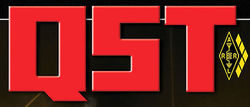 "The majority of you told us that the 'look' of QST was becoming stale, that it wasn't in step with modern publications," Ford said in editorial remarks in the January 2018 issue. "You also told us that you desired different types of articles that spoke more to the needs of the average amateur. We've heard you - and we are responding."
"The majority of you told us that the 'look' of QST was becoming stale, that it wasn't in step with modern publications," Ford said in editorial remarks in the January 2018 issue. "You also told us that you desired different types of articles that spoke more to the needs of the average amateur. We've heard you - and we are responding."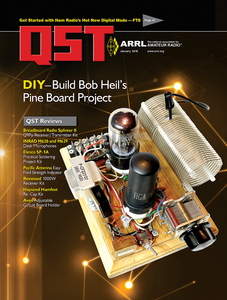 Ford said League members have indicated a preference for articles that provide practical, immediately usable information, guide readers to new activities, and tell more about what radio amateurs are doing -- with an emphasis on personal stories that inspire.
Ford said League members have indicated a preference for articles that provide practical, immediately usable information, guide readers to new activities, and tell more about what radio amateurs are doing -- with an emphasis on personal stories that inspire.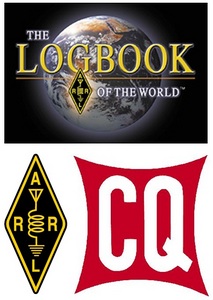 Implementation, documentation, and internal testing of the link between LoTW and WAZ is complete. ARRL and CQ are now assembling a team of external beta testers to assure that the link is ready for widespread use. A separate announcement will be made when LoTW's support for CQ WAZ is available to everyone.
Implementation, documentation, and internal testing of the link between LoTW and WAZ is complete. ARRL and CQ are now assembling a team of external beta testers to assure that the link is ready for widespread use. A separate announcement will be made when LoTW's support for CQ WAZ is available to everyone. Sponsored by
Sponsored by 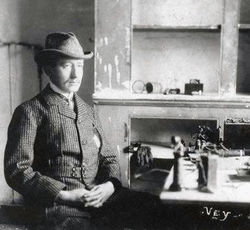
.jpg)
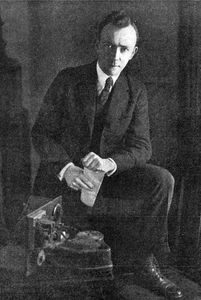

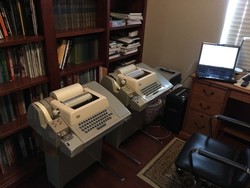
 A large part of the region's major town, Trbovlje, lost electrical power, including the 112 emergency call system (Slovenia's 911 system). Calls had to be transferred from the Zasavje region to the call/dispatch center in Ljubljana, and this increased the workload of the dispatchers on duty.
A large part of the region's major town, Trbovlje, lost electrical power, including the 112 emergency call system (Slovenia's 911 system). Calls had to be transferred from the Zasavje region to the call/dispatch center in Ljubljana, and this increased the workload of the dispatchers on duty.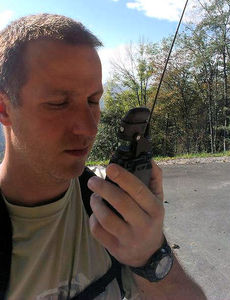
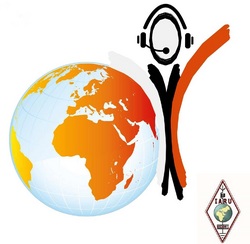 "The SARL and the South African YOTA Working Group are delighted with the response, and we are looking forward to hosting a successful YOTA 2018 event as an unforgettable African experience that will be remembered for many years to come," SARL said in announcing the 2018 YOTA camp.
"The SARL and the South African YOTA Working Group are delighted with the response, and we are looking forward to hosting a successful YOTA 2018 event as an unforgettable African experience that will be remembered for many years to come," SARL said in announcing the 2018 YOTA camp.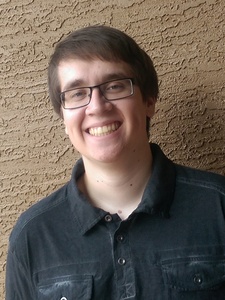 Goldfarb Scholarship Winner Accepts "Amazing Opportunity" to Intern for NASA: A recipient of the prestigious
Goldfarb Scholarship Winner Accepts "Amazing Opportunity" to Intern for NASA: A recipient of the prestigious .jpg) ARRL Foundation Announces Ozaukee Radio Club, W9CQO, Scholarship:
ARRL Foundation Announces Ozaukee Radio Club, W9CQO, Scholarship: 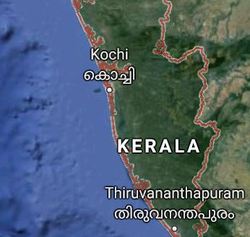 Report from India: Ham Radio Aids Rescue of Two Fishermen: According to a December 6
Report from India: Ham Radio Aids Rescue of Two Fishermen: According to a December 6 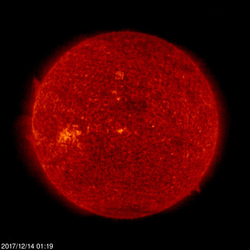 Geomagnetic numbers were low, with the average planetary A index declining from 11.6 to 7.4, and the mid-latitude A index from 8.1 to 5.6.
Geomagnetic numbers were low, with the average planetary A index declining from 11.6 to 7.4, and the mid-latitude A index from 8.1 to 5.6.







